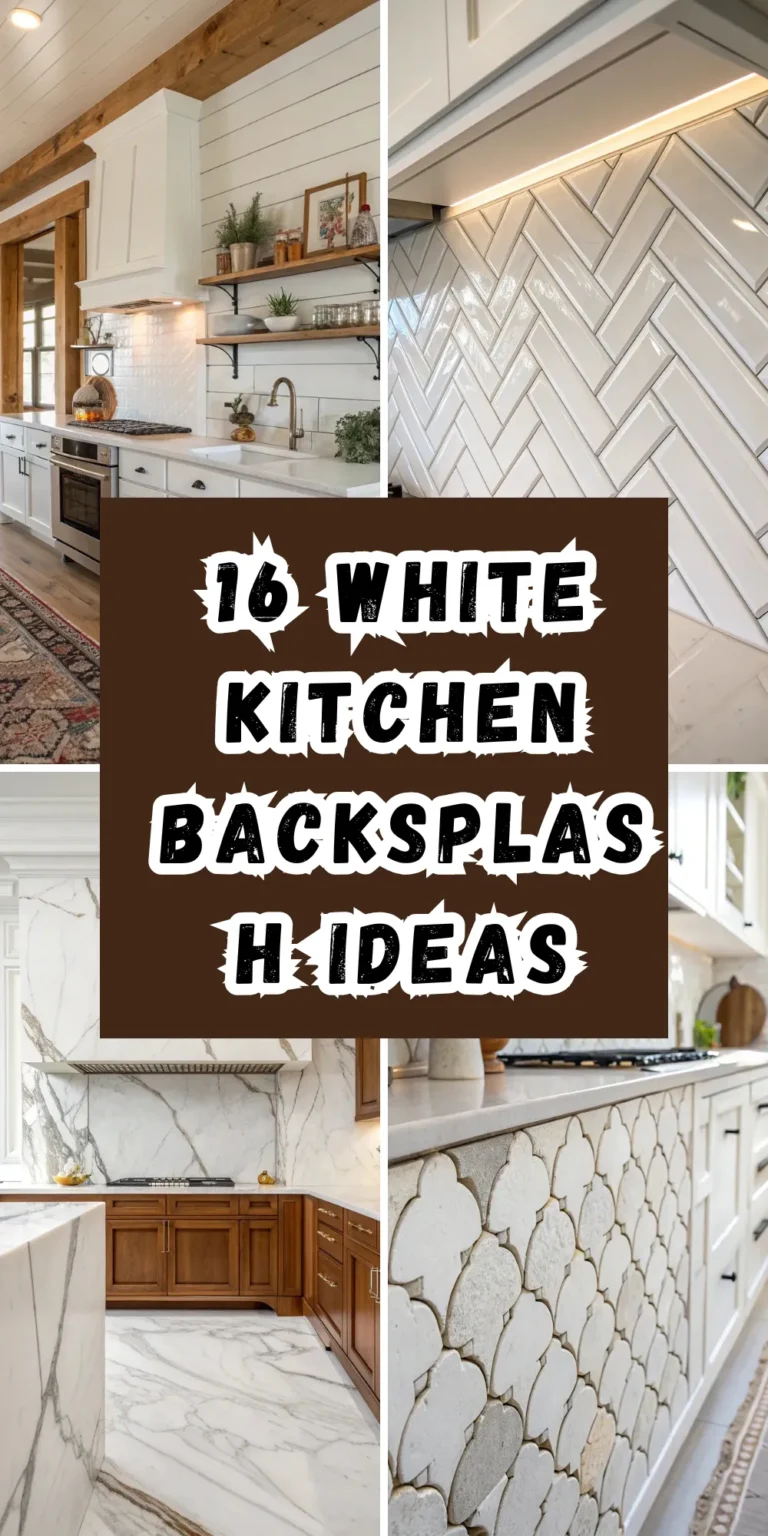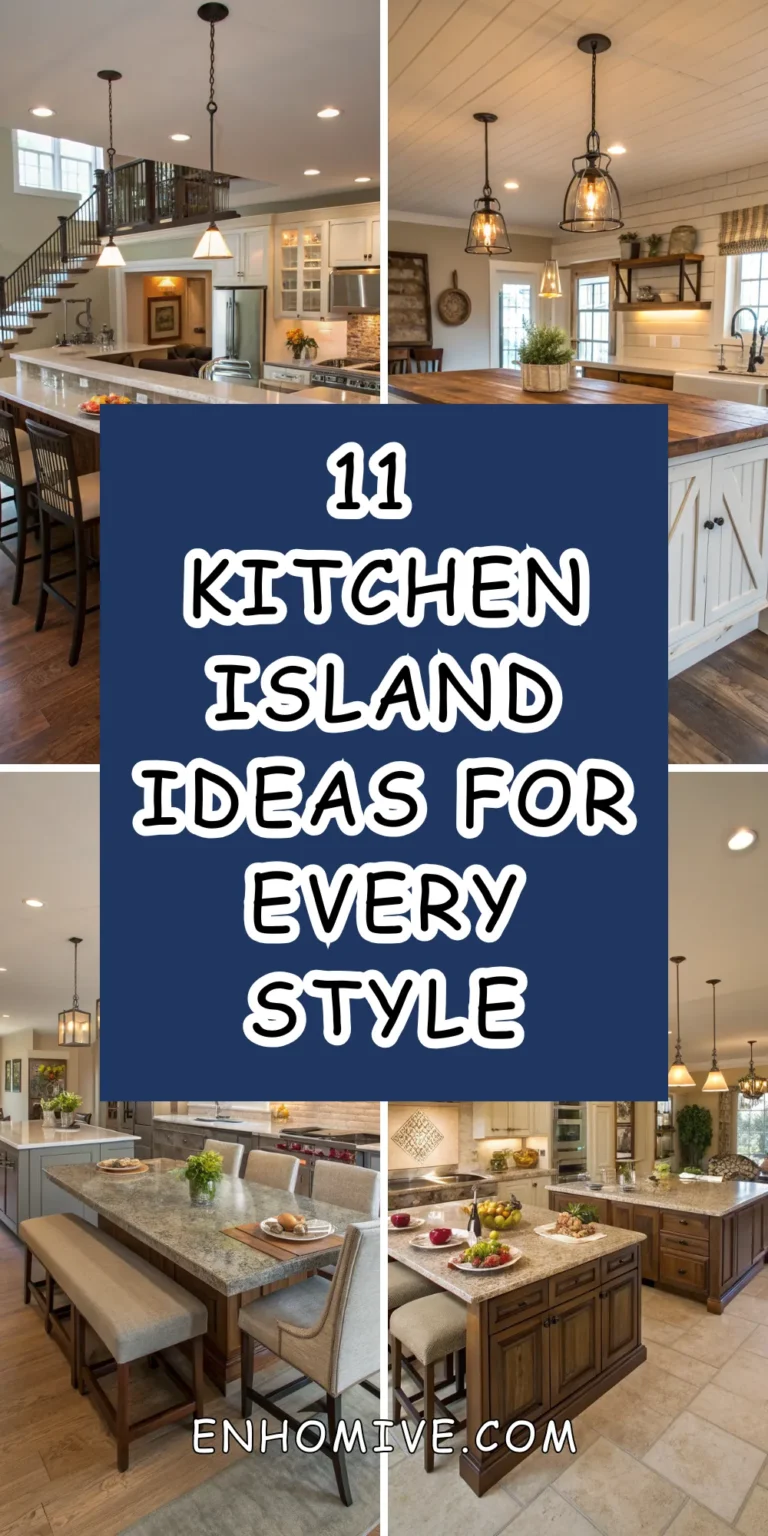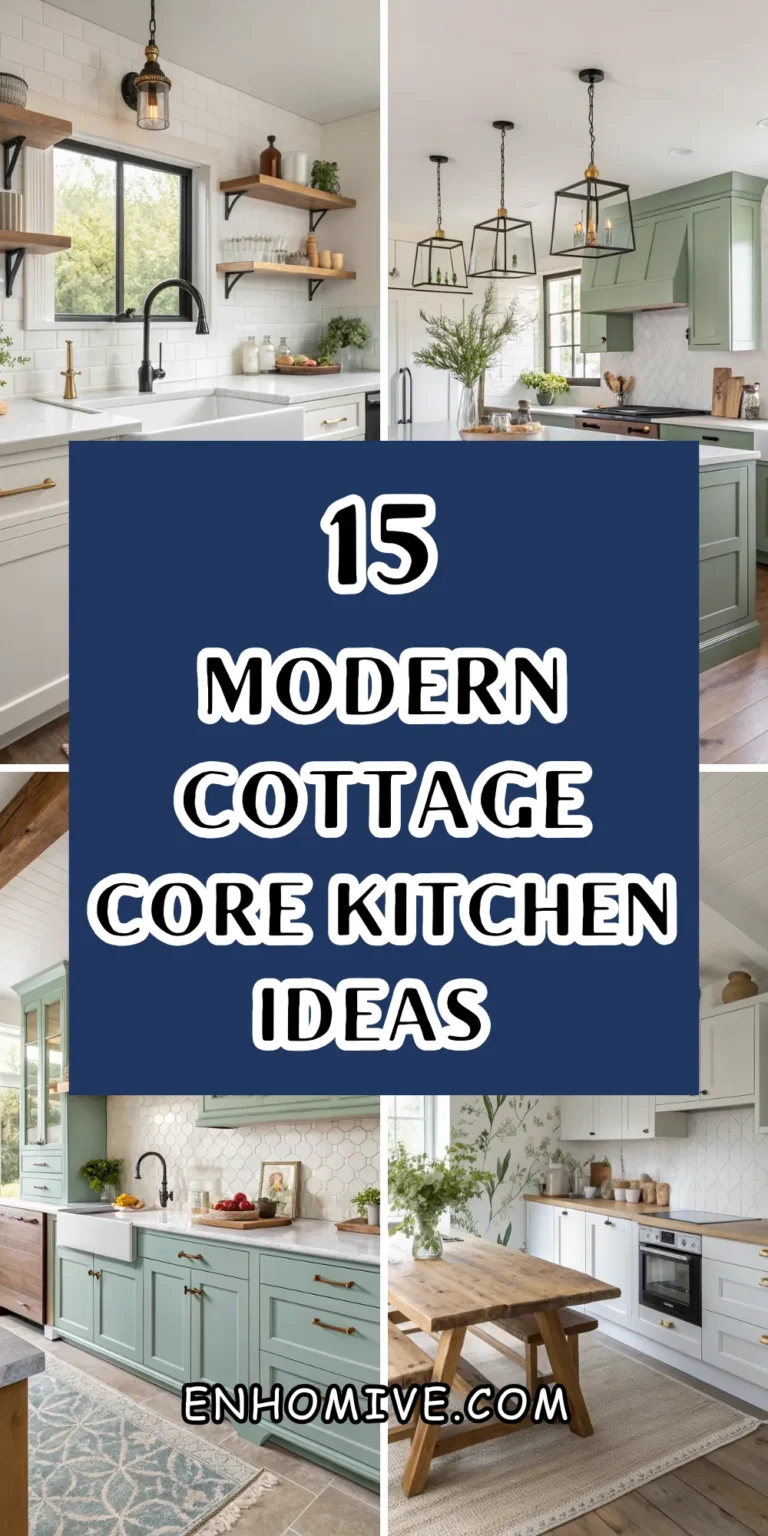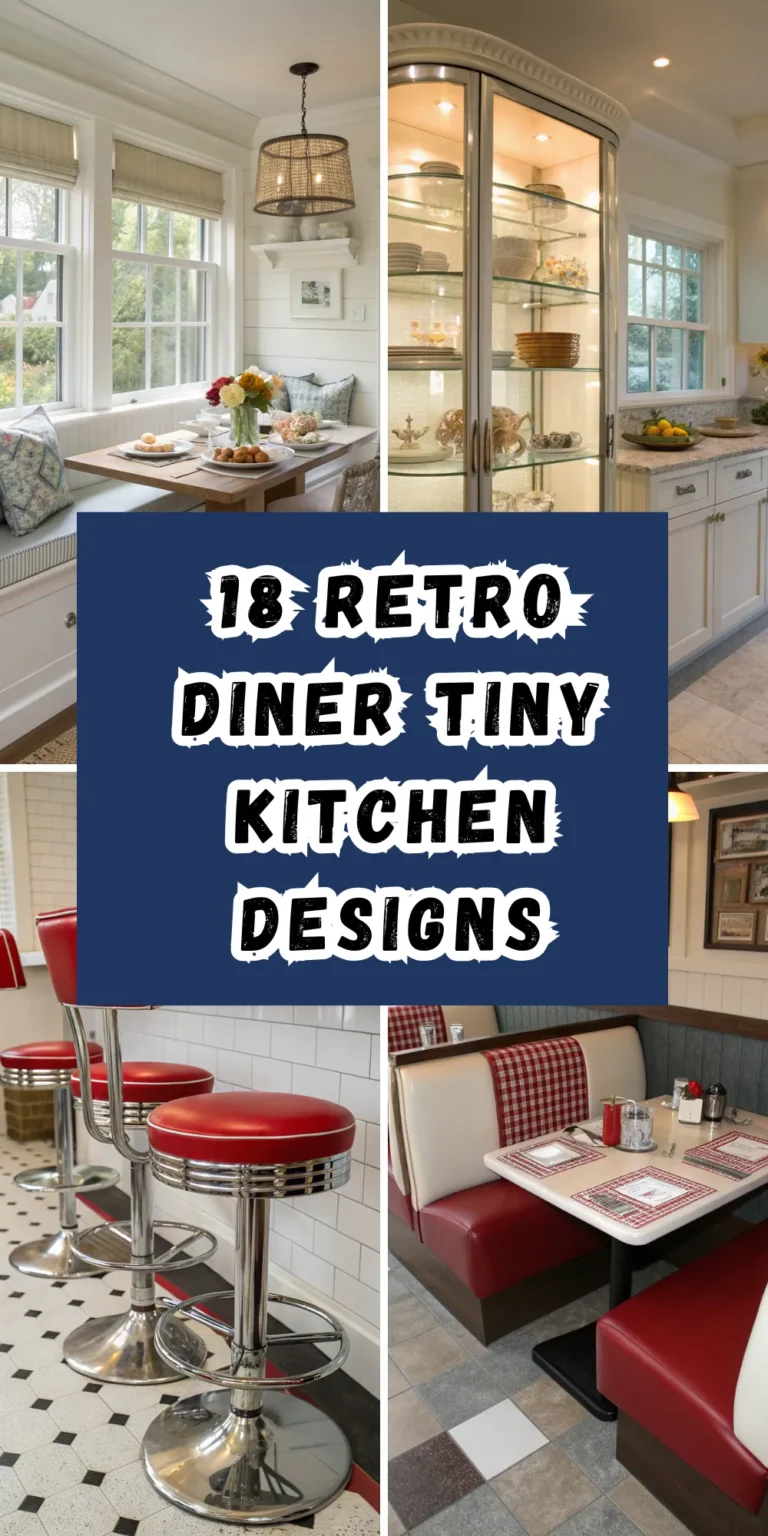10 Farmhouse Kitchen Decor Ideas
Farmhouse kitchens capture the perfect balance of rustic charm and practical functionality, creating spaces that feel both timeless and welcoming. This beloved design style celebrates natural materials, vintage finds, and the kind of lived-in comfort that makes everyone want to gather around the kitchen table for hours of conversation and home-cooked meals.

The secret to authentic farmhouse style lies in mixing weathered textures with clean, functional elements—think shiplap walls paired with sleek subway tile, or vintage wooden cutting boards displayed alongside modern appliances. These design choices create kitchens that feel collected over time rather than purchased all at once, resulting in spaces with genuine character and soul.
Shiplap Wall Treatment
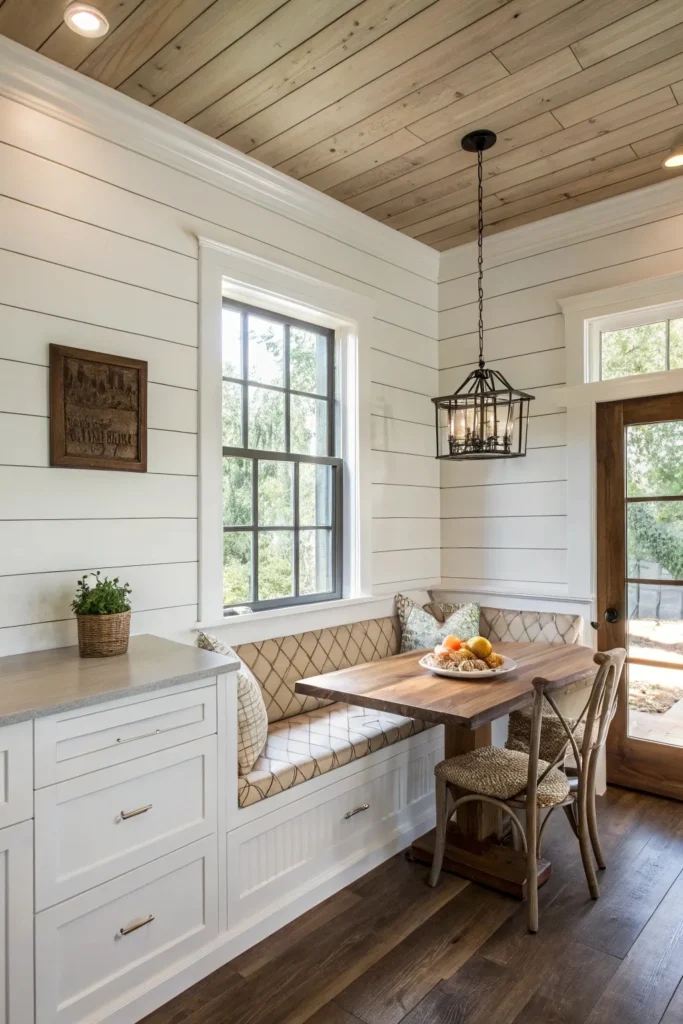
Why try this? Horizontal wood planking instantly adds authentic farmhouse texture and architectural interest to any kitchen space.
Implementation: Install real wood shiplap or MDF planks horizontally across accent walls or the entire kitchen. Paint in classic white, soft gray, or leave natural wood finish with clear protective coating. Focus on backsplash areas or breakfast nook walls for maximum impact.
Who benefits: Those wanting to add architectural character to plain drywall and create authentic farmhouse foundation.
Pro tip: Use nickel gap shiplap (small space between boards) for a more refined look, or traditional tight-joint shiplap for rustic appeal.
Farmhouse Sink with Vintage-Style Faucet
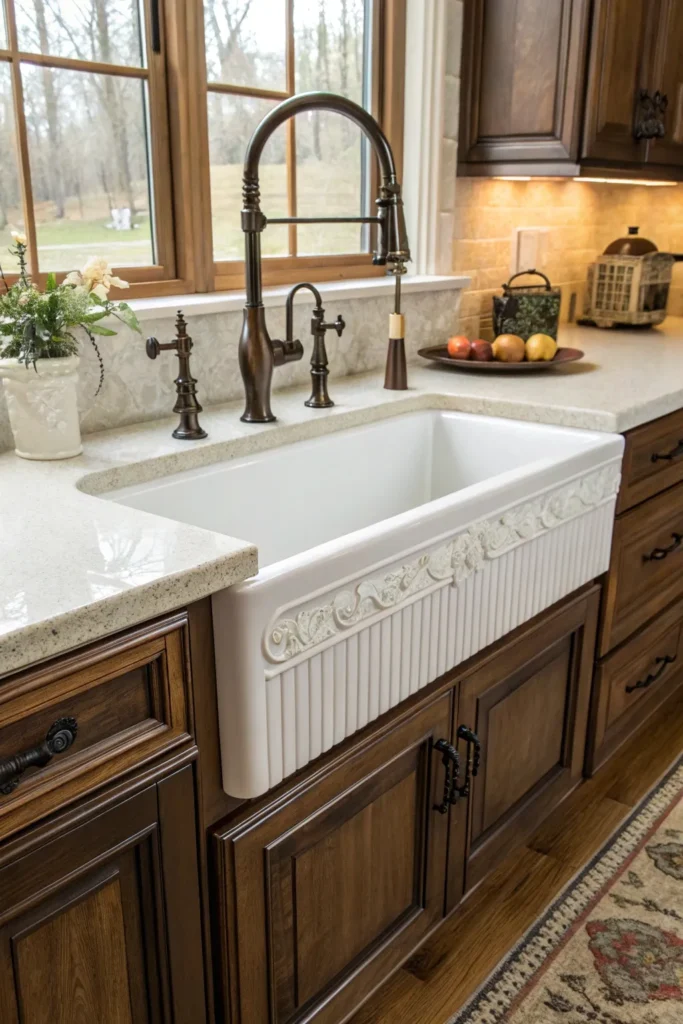
Create the ultimate farmhouse focal point with an oversized apron-front sink and coordinating vintage-inspired faucet.
Implementation: Choose white fireclay or stainless steel farmhouse sink with exposed front panel. Pair with bridge-style or gooseneck faucet in oil-rubbed bronze, brushed nickel, or matte black finish. Ensure proper cabinet modifications for apron-front installation.
Best for: Those who love classic farmhouse aesthetics and need a large-capacity sink for busy cooking and entertaining.
Con: Farmhouse sinks require custom cabinet work and can be more expensive than standard undermount options.
Open Shelving Display
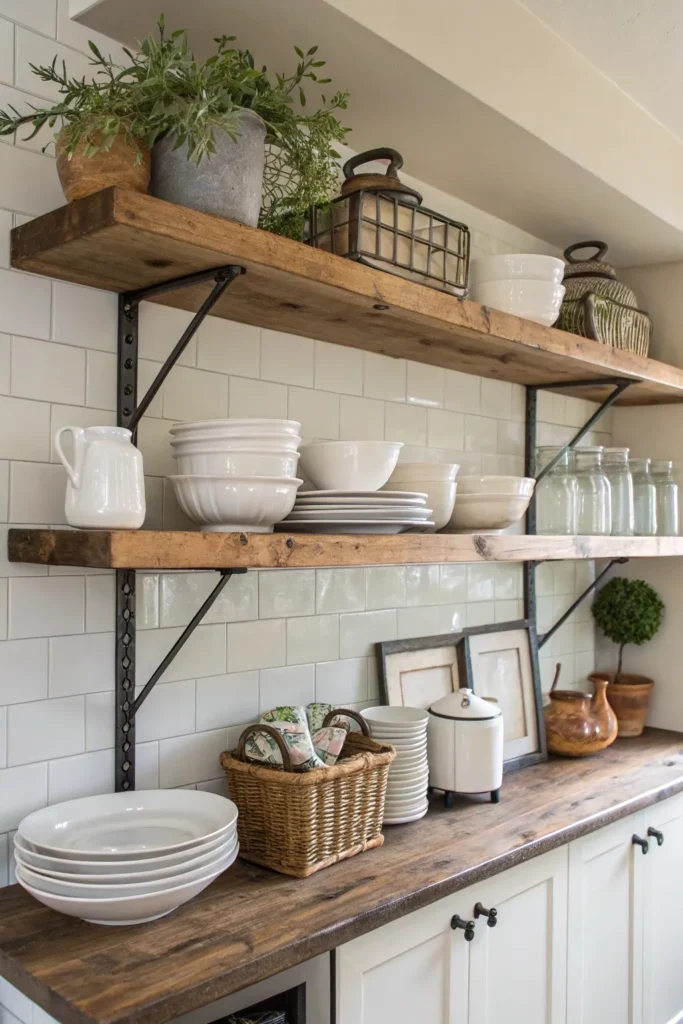
Why try this? Open shelves showcase beautiful dishware while creating airy, accessible storage that feels authentically farmhouse.
Steps: Install floating wood shelves, metal brackets with reclaimed wood, or remove upper cabinet doors to create open storage. Display white ironstone, vintage crockery, and everyday dishes mixed with decorative elements.
Why it works: Forces you to keep dishes organized while adding visual lightness and showcasing farmhouse collections.
Styling tip: Follow “rule of three” groupings and mix heights, textures, and colors for visually pleasing displays.
Vintage-Inspired Lighting Fixtures
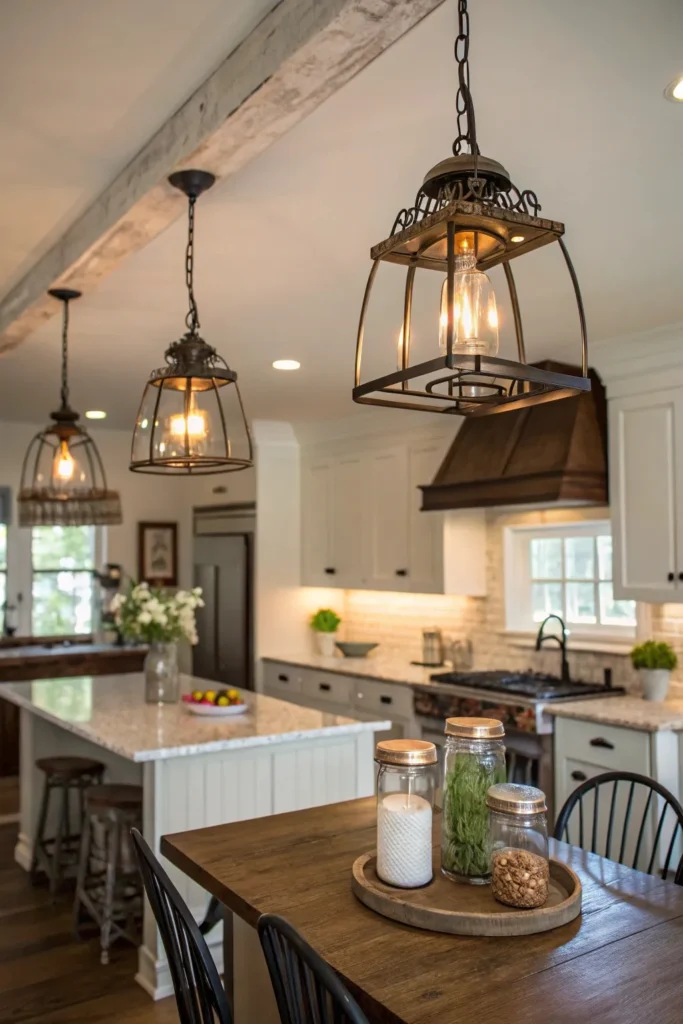
Illuminate your farmhouse kitchen with period-appropriate fixtures that combine function with authentic character.
How to: Choose pendant lights with metal shades, mason jar fixtures, or wrought iron chandeliers above islands and dining areas. Install vintage-style flush mounts or semi-flush fixtures for general lighting. Mix finishes like oil-rubbed bronze, galvanized metal, or painted black.
Why it matters: Authentic lighting ties the entire farmhouse aesthetic together while providing necessary task illumination.
Pro tip: Layer different light sources—pendants for task lighting, chandeliers for ambiance, and under-cabinet strips for prep work.
Butcher Block Countertops
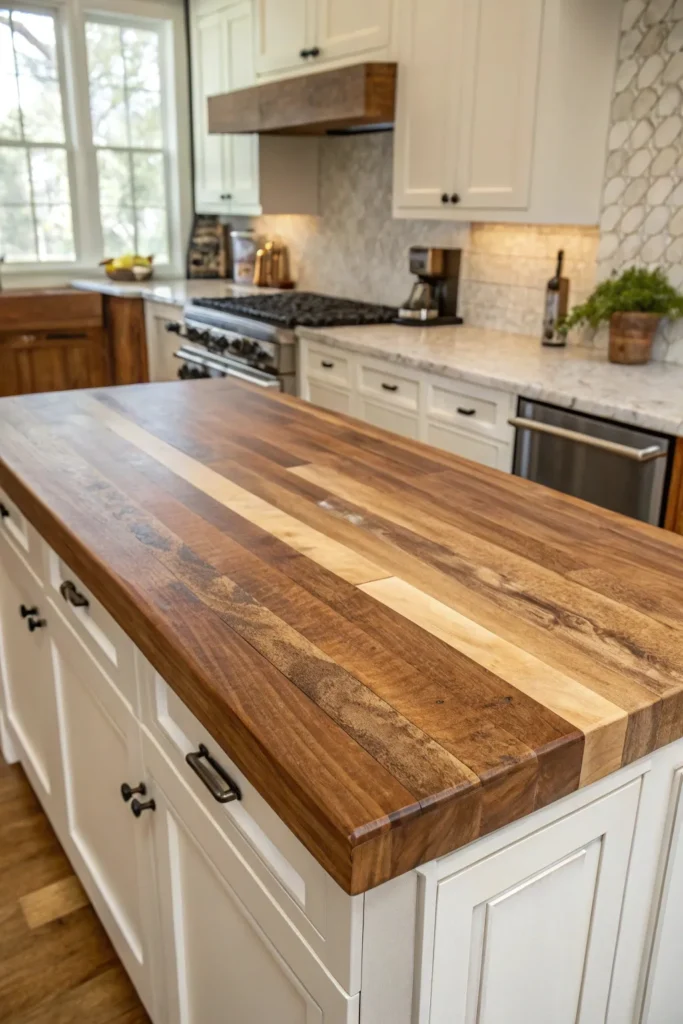
Add warmth and natural beauty with genuine wood countertops that develop character over time.
Implementation: Choose thick-cut butcher block in oak, maple, or walnut with food-safe finish. Install full countertops or combine with other materials like marble or quartz. Regular oiling maintains appearance and prevents cracking.
Who benefits: Those wanting natural materials that age beautifully and provide excellent prep surface for cooking.
Downside: Requires regular maintenance and isn’t as stain-resistant as stone surfaces—consider placement carefully.
Vintage Mason Jar Storage and Decor
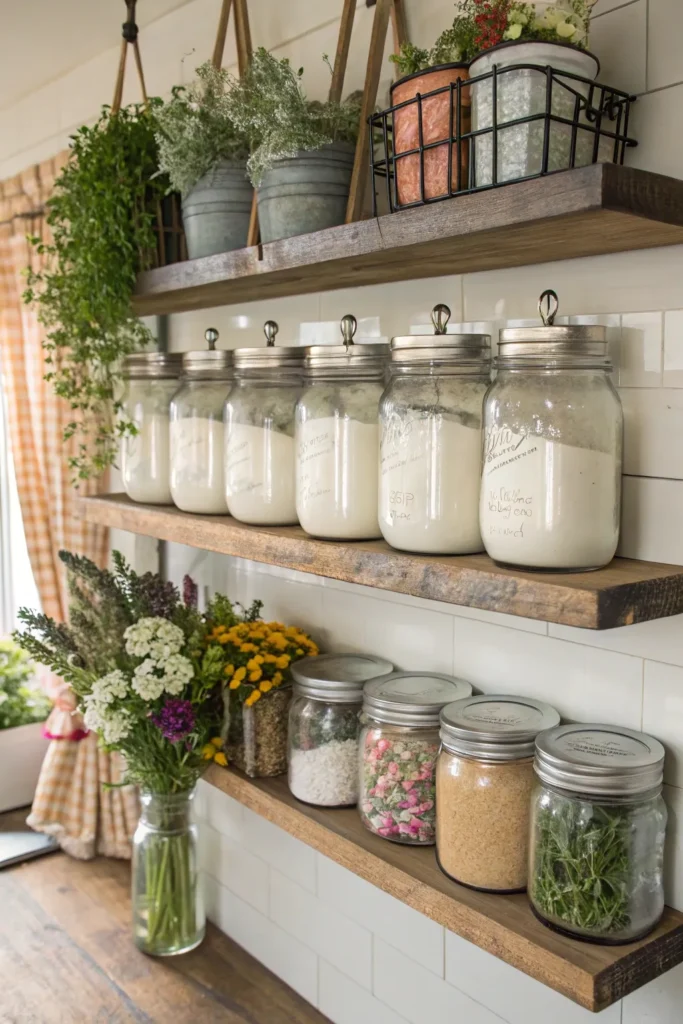
Transform humble mason jars into functional farmhouse storage and decorative elements throughout the kitchen.
Steps: Use mason jars for bulk storage of flour, sugar, and pantry staples. Create hanging herb gardens with mason jars and metal lids. Display seasonal flowers or greenery in vintage Ball or Kerr jars.
Best for: Those who love functional decor and appreciate vintage Americana aesthetics.
Con: Glass jars can break easily—choose plastic alternatives for high-traffic areas or families with small children.
Reclaimed Wood Accents
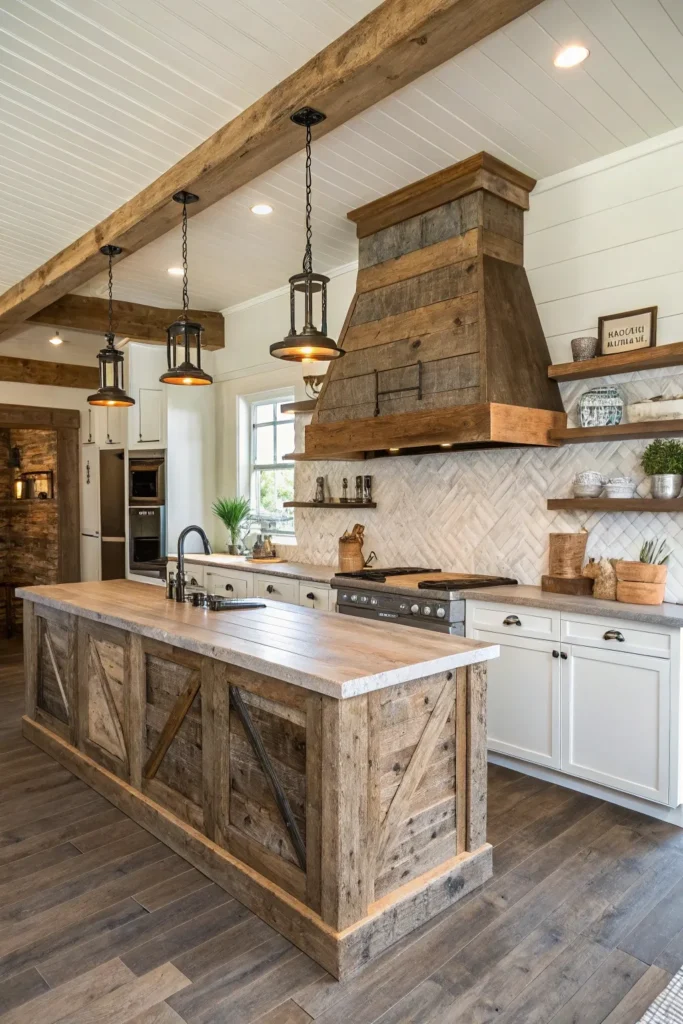
Why try this? Weathered barn wood adds authentic age and texture that can’t be replicated with new materials.
How-to: Use reclaimed wood for floating shelves, range hood covers, or accent walls. Create custom islands with reclaimed wood base and butcher block top. Install reclaimed beam mantels over ranges or sinks.
Why it’s helpful: Provides genuine farmhouse character while supporting sustainable design practices through material reuse.
Pro tip: Ensure reclaimed wood is properly treated for indoor use and free from pests before installation.
Subway Tile Backsplash with Dark Grout
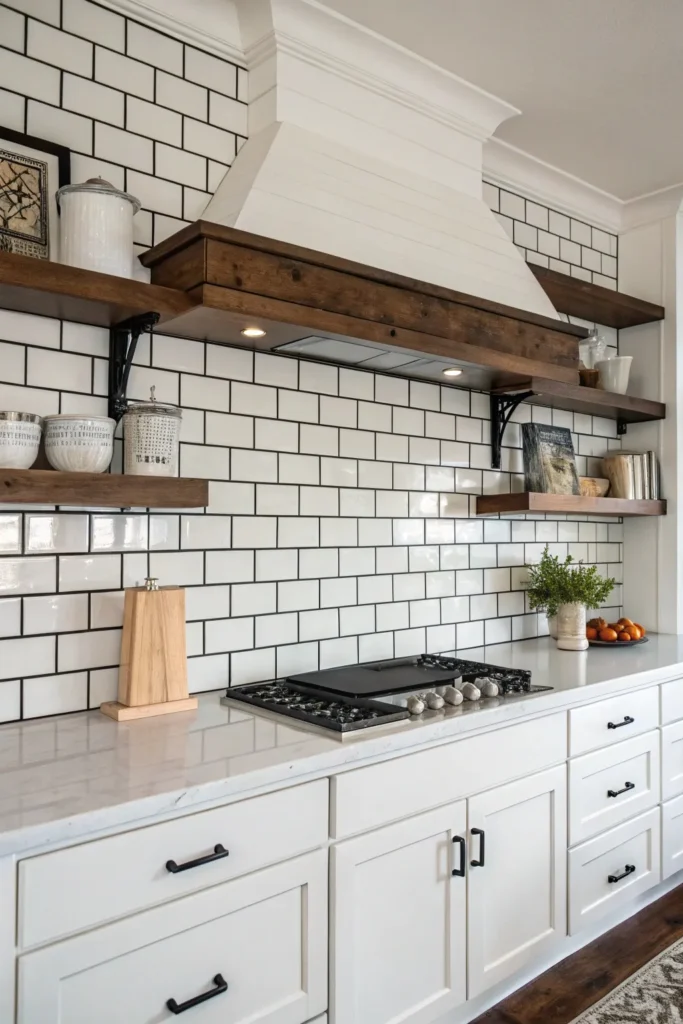
Create classic farmhouse backsplash with timeless white subway tile enhanced by dramatic grout lines.
Benefits: White subway tile provides a clean, traditional foundation that never goes out of style. Dark grout (charcoal or black) adds definition and hides dirt better than white. Easy to clean and maintain for busy cooking areas.
Steps: Install 3×6 inch white subway tiles in traditional running bond pattern. Use dark grout for contrast or white grout for seamless look. Extend to ceiling for dramatic impact or stop at standard height with wood shelving above.
Best for: Those wanting classic, timeless backsplash that complements farmhouse elements without overwhelming the space.
Styling tip: Consider beveled subway tiles for added dimension or handmade tiles for subtle texture variation.
Vintage Scale and Cutting Board Display
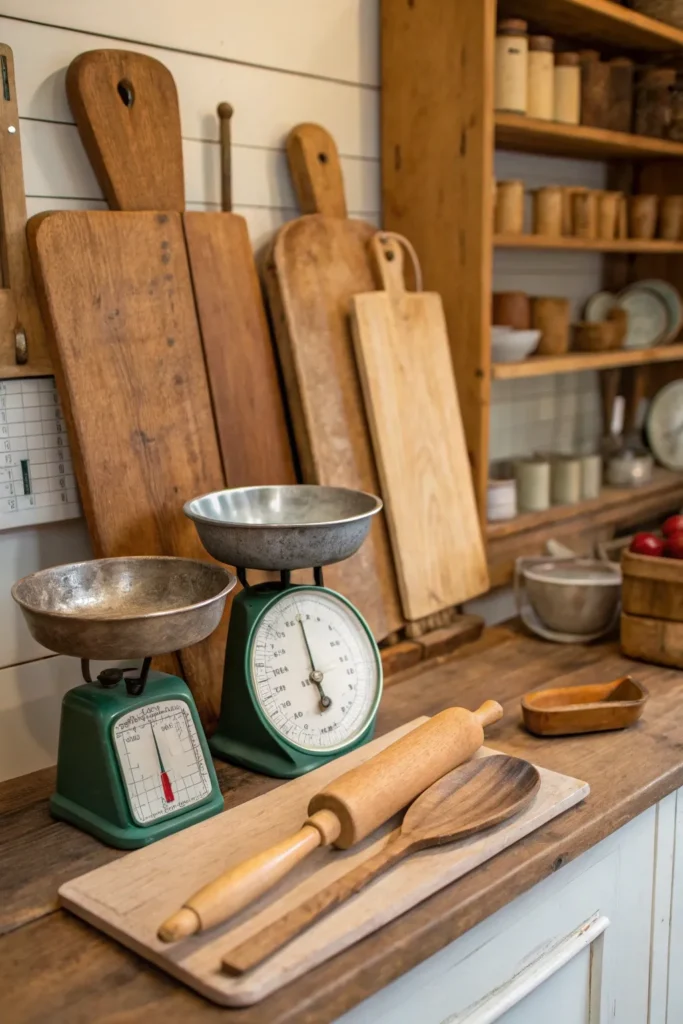
Showcase functional farmhouse tools as decorative elements that celebrate the joy of home cooking.
How to: Display vintage kitchen scales on counters or open shelving alongside a collection of wooden cutting boards in various sizes. Add vintage measuring cups, rolling pins, and wooden spoons for authentic farmhouse vignettes.
Who it’s for: Collectors of vintage kitchen tools and those who appreciate functional decor with history.
Con: Vintage items require careful cleaning and maintenance—ensure food-safe finishes for items used in cooking.
Farmhouse Color Palette with Natural Textures
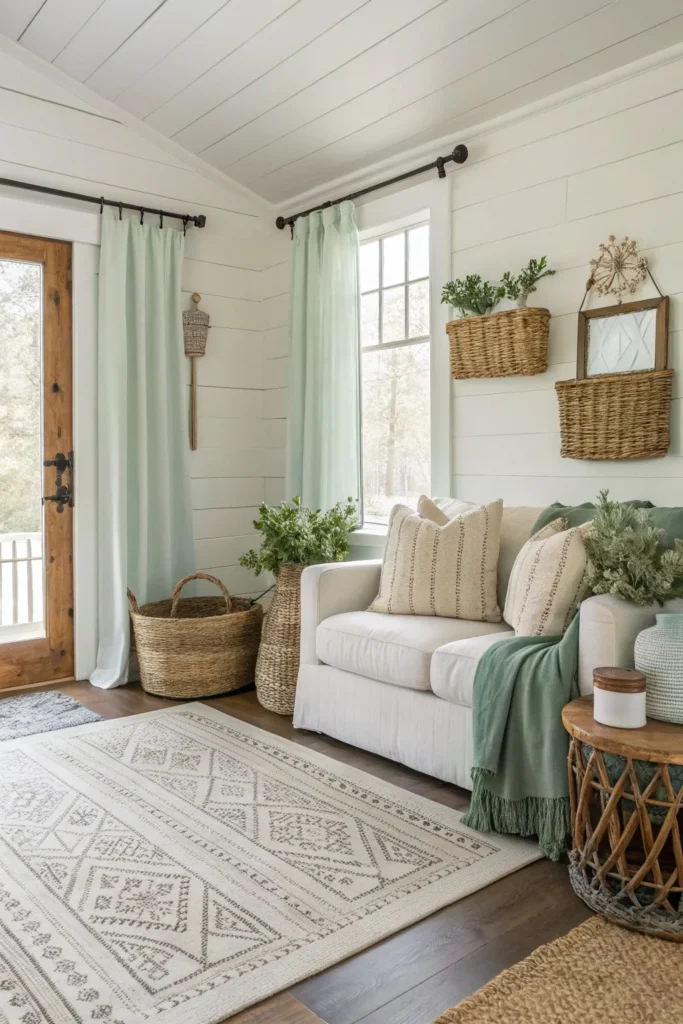
Create a cohesive farmhouse atmosphere through carefully chosen colors and authentic material combinations.
Implementation: Use soft whites, warm creams, sage greens, and weathered grays as foundation colors. Add natural textures through jute rugs, linen curtains, and woven baskets. Incorporate metal accents in galvanized steel, oil-rubbed bronze, or matte black finishes.
Why it matters: Proper color and texture balance prevents farmhouse style from feeling too rustic or overly precious.
Downside: Neutral palettes can feel bland without proper texture and accent layers—plan material mix carefully.
These 10 farmhouse kitchen decor ideas offer the perfect starting point for creating your own country-inspired culinary haven. Whether you’re drawn to the rustic charm of reclaimed wood and vintage finds or prefer the cleaner lines of white shiplap and subway tile, farmhouse style celebrates the beauty of simple, honest materials and time-tested design.
The most successful farmhouse kitchens feel authentic rather than themed, mixing practical elements with carefully chosen vintage pieces that tell a story. Start with foundational elements like shiplap walls and farmhouse sinks, then layer in personal touches through vintage collections and natural materials. Remember, true farmhouse style is about creating a space that feels lived-in, loved, and ready to welcome family and friends for countless shared meals and cherished memories.

